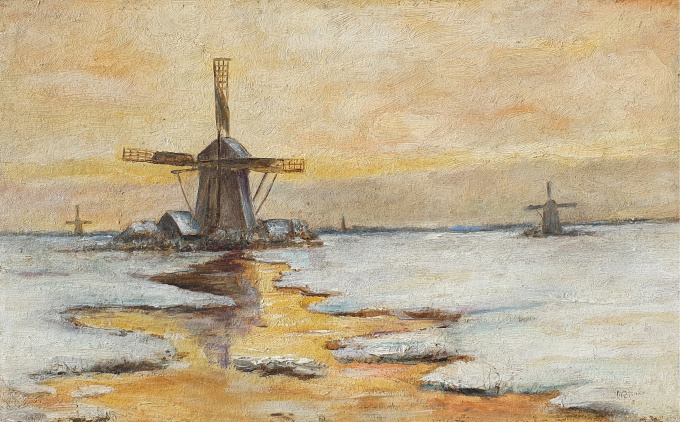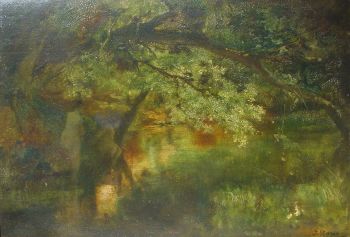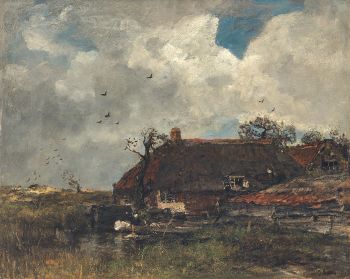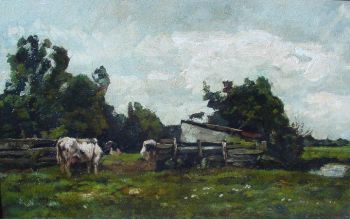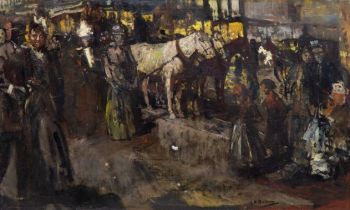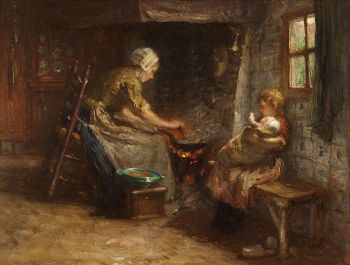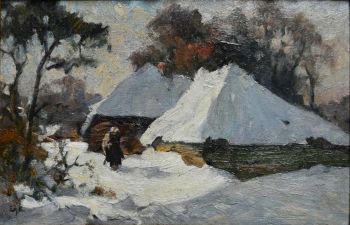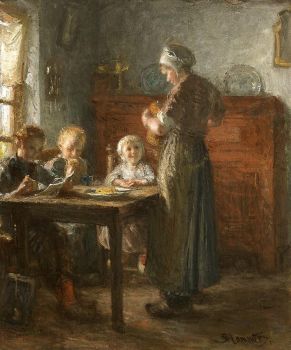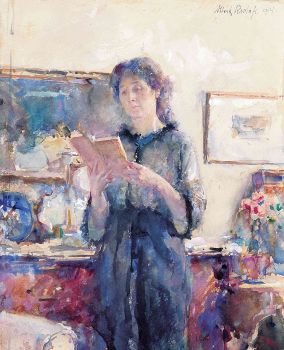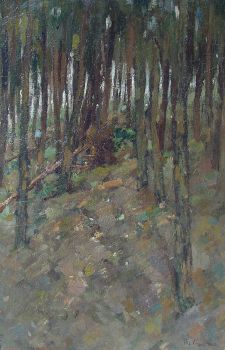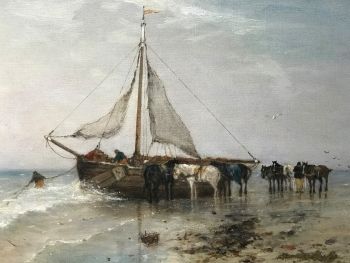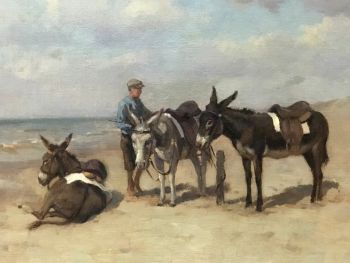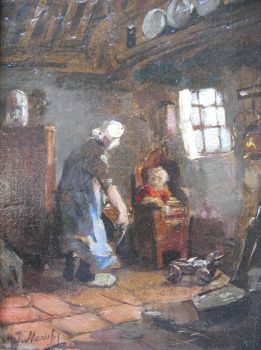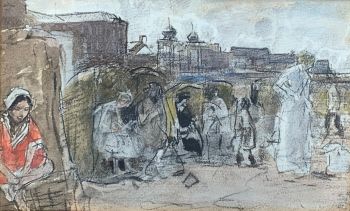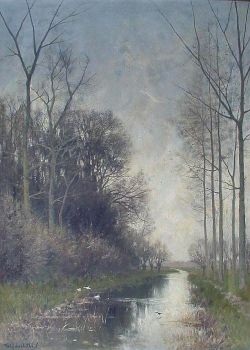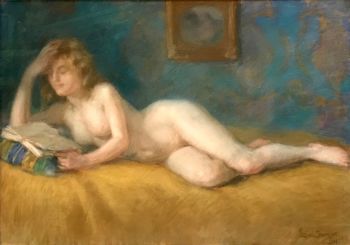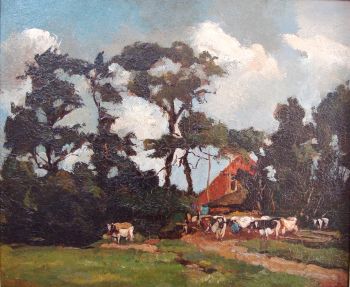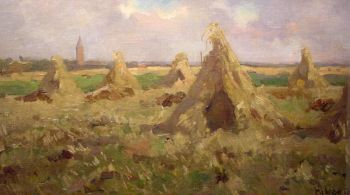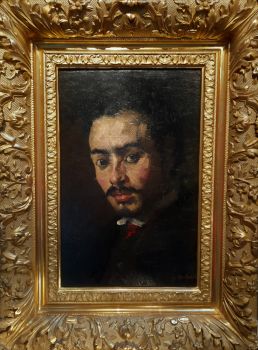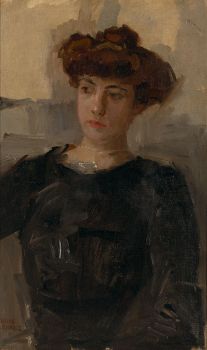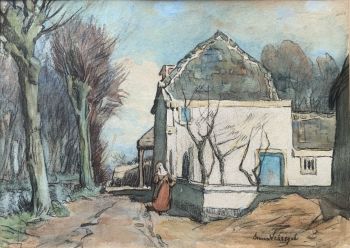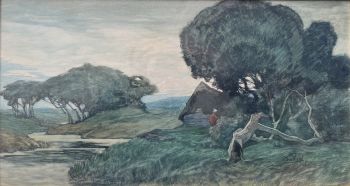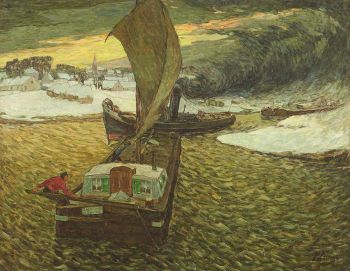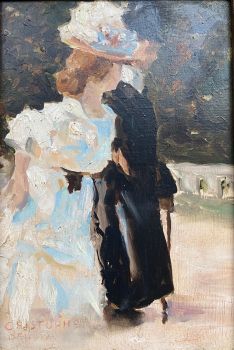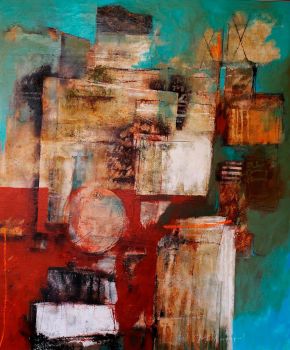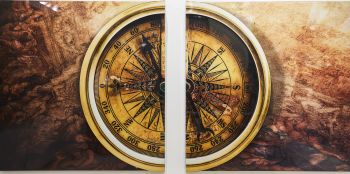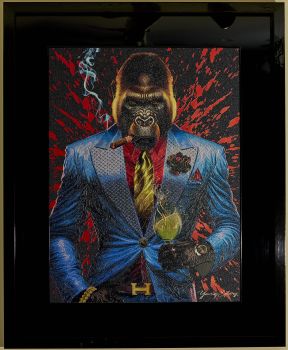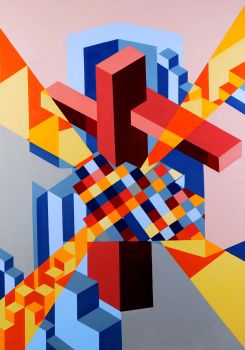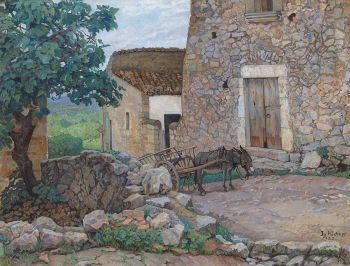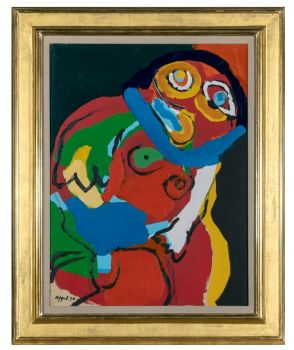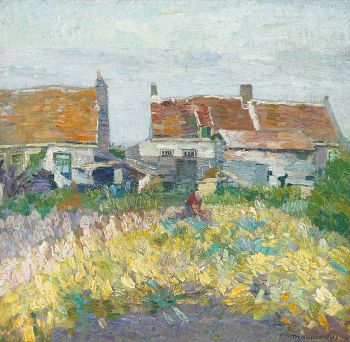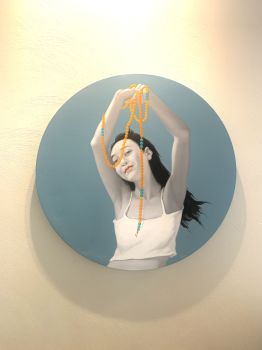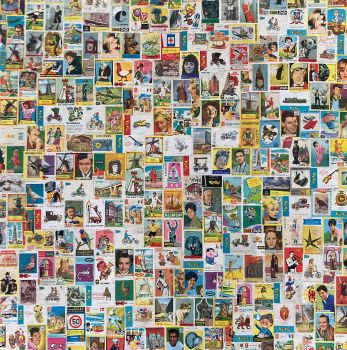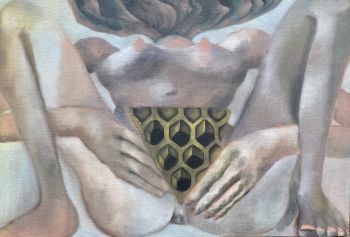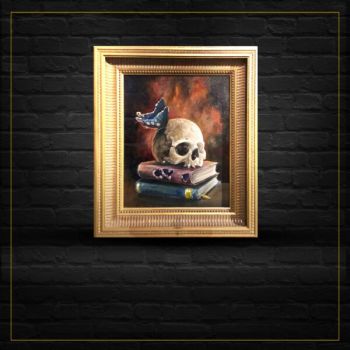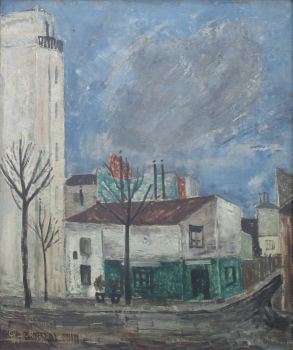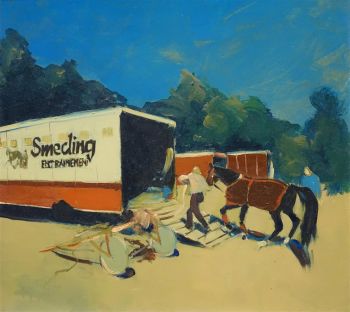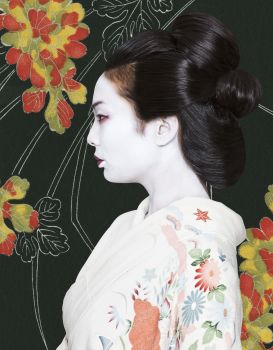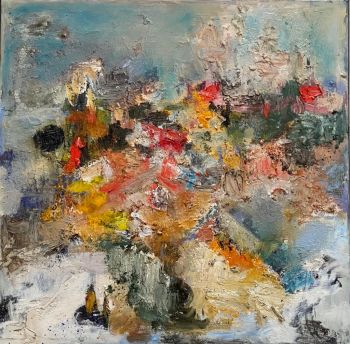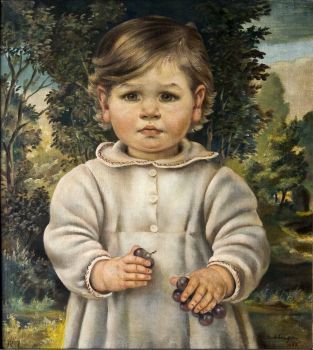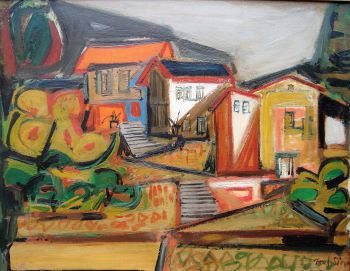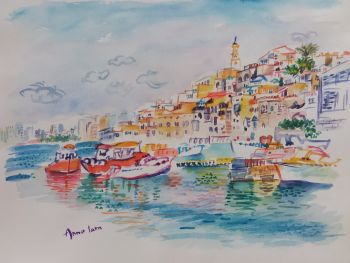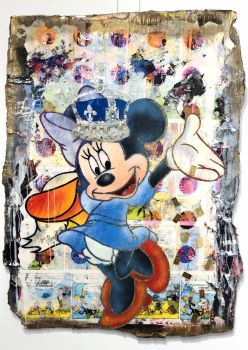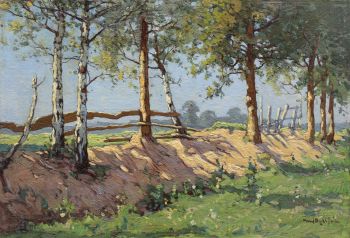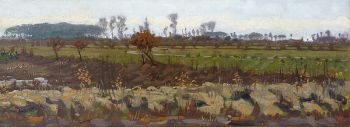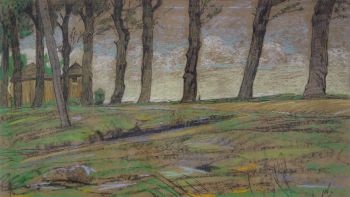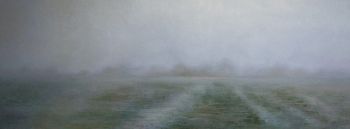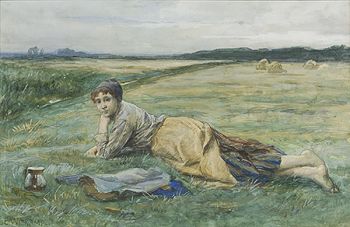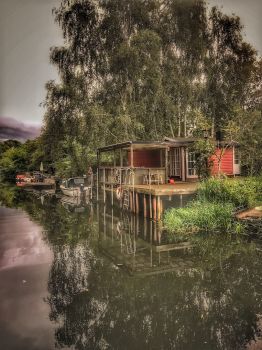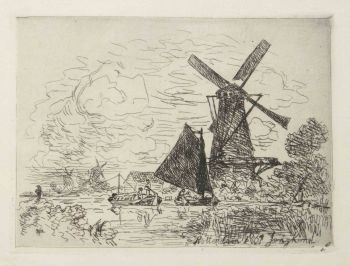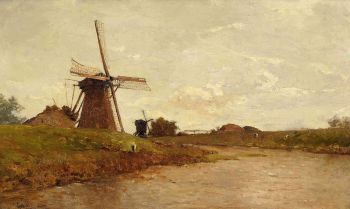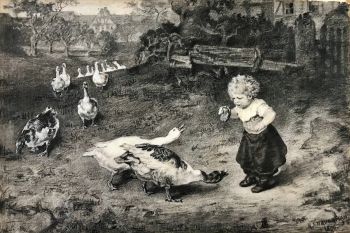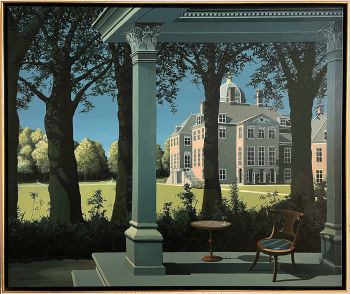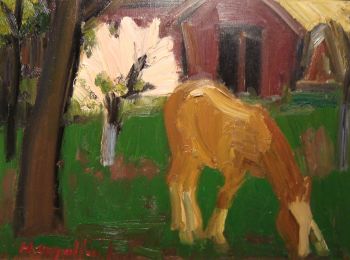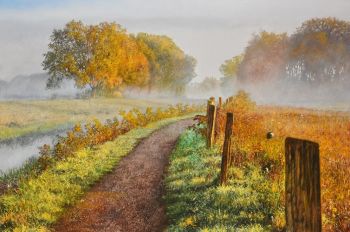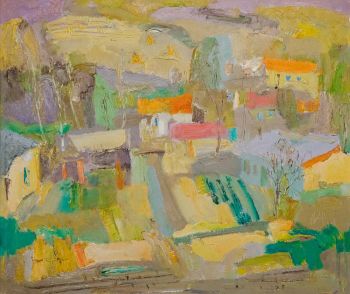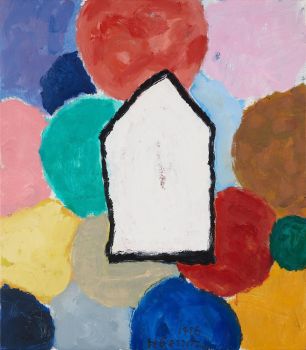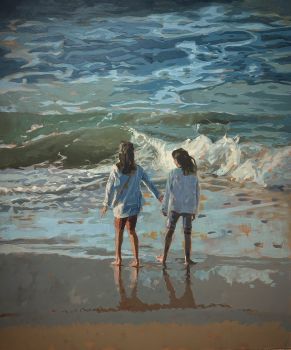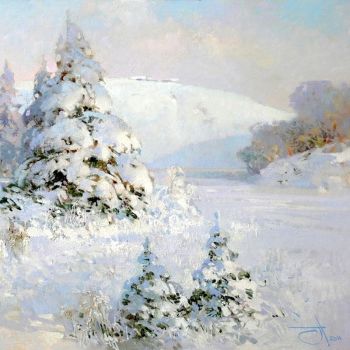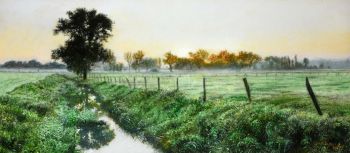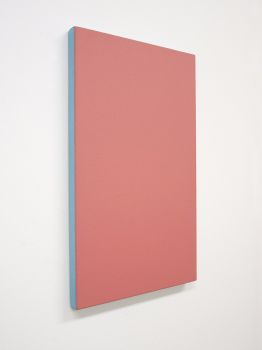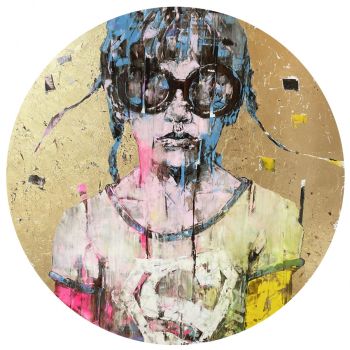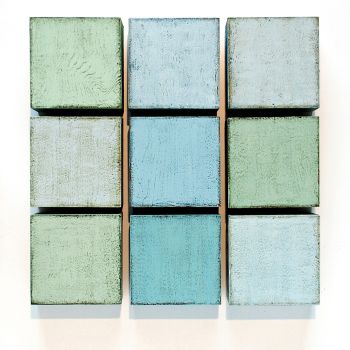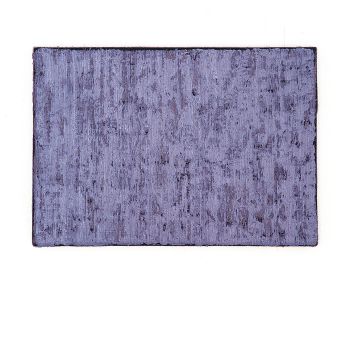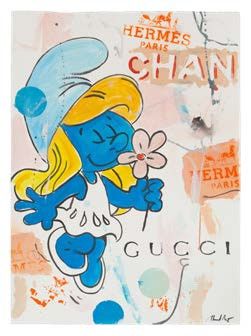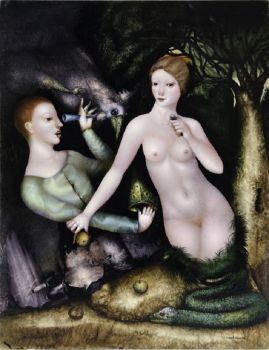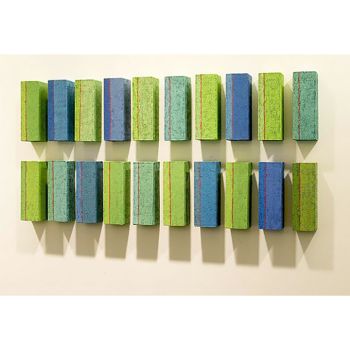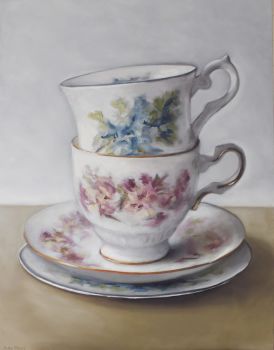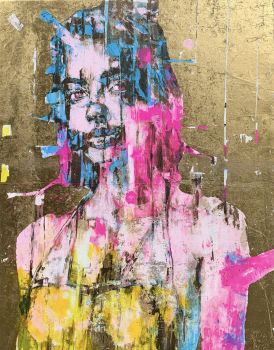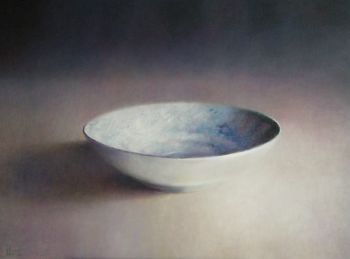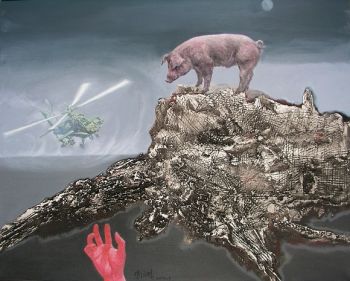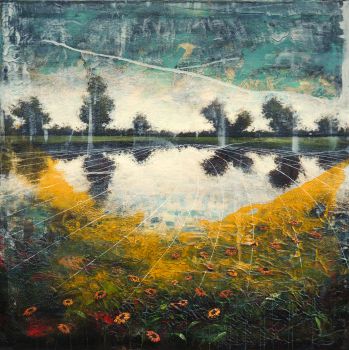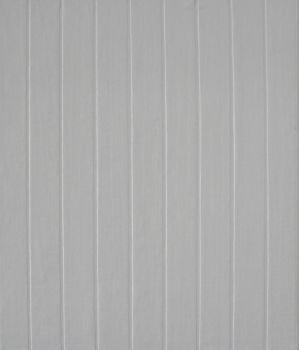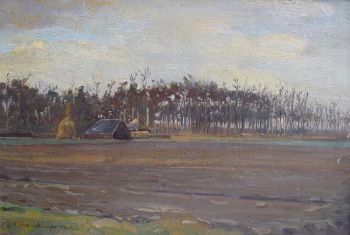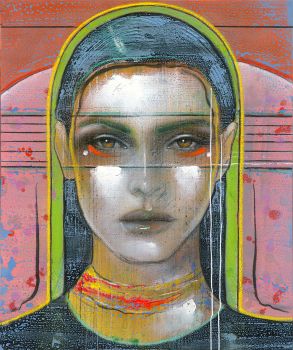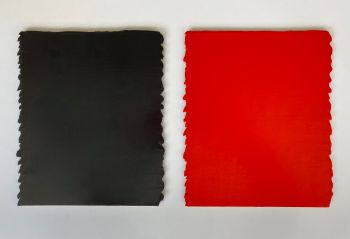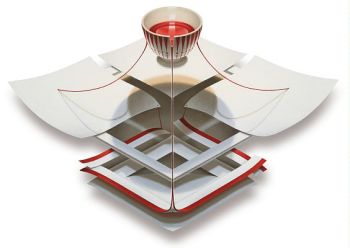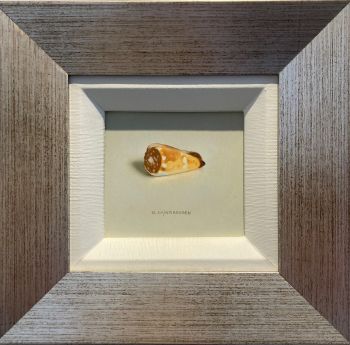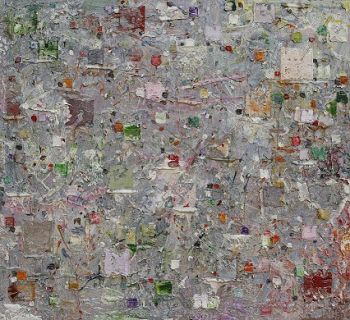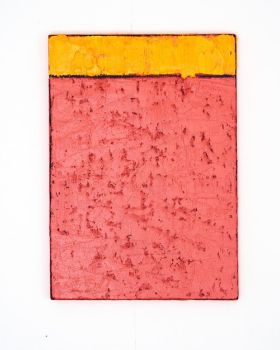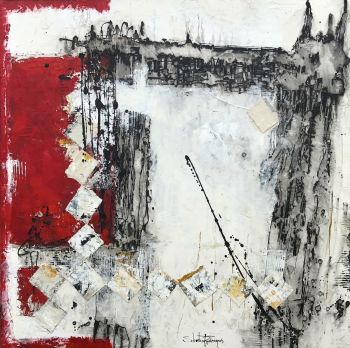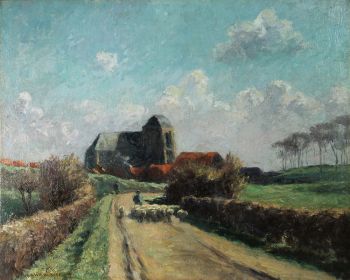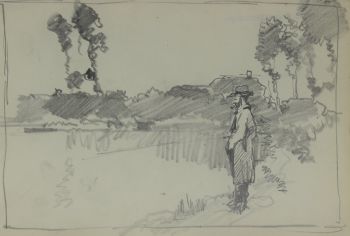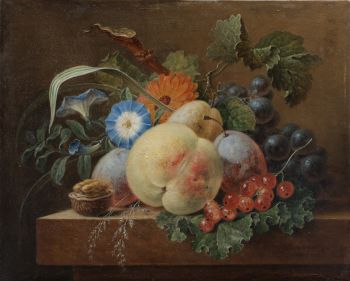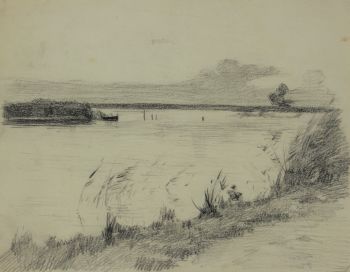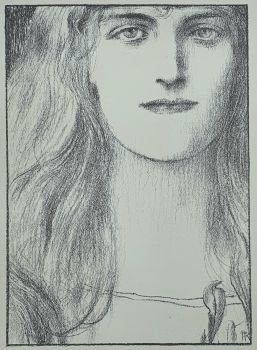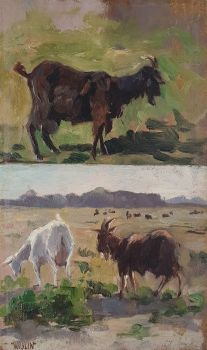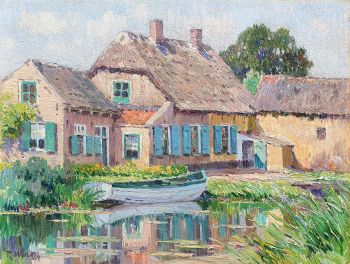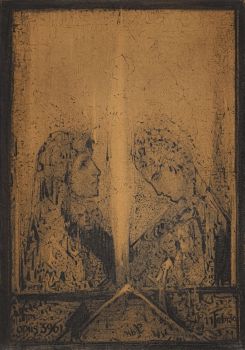Winter in Holland 1900 - 1910
Philippe Zilcken
MaderaTableroPintura de aceitePintura
18.50 ⨯ 31 cm
ConditionExcellent
€ 2.750
Klooster Fine Art
- Sobre la obra de arte[EN]
Philip Zilcken used an unusual palette to create the atmosphere for this winter view of the Dutch countryside. Winter in Holland may be the same painting that Zilcken showed in 1909 on the 79th international exhibition in the Museum of Modern Art in Rome, Italy. In the review of the exhibition in De Nieuwe Courant, on 10 April 1909, the reviewer remarked that out of all Dutch contributors, Zilcken was the only artist that proved of international cachet. The writer stated that ‘An old gate in Algiers’ and ‘Winter in Holland’ were painted in eccentric and atmospheric tones that draw much attention. By doing so, the reviewer wrote that Zilcken was the only Dutch artist standing out from the masses.
This landscape of the countryside show just those atmospheric tints the reviewer praised in Zilcken’s Winter in Holland. By having the warmly coloured sky reflected in the water stretching towards the closest windmill, Zilcken created a stark contrast with the snow on the fields. Two more windmills can be seen in the background. All three windmills have their sails in the short rest position. When millers weren’t expecting rain for a short while, the sails would be left in this position, resembling a big ‘+’ sign.
Especially in the sky, Zilcken used his typical, vivid brushstrokes, almost giving a sense of movement. This painting on board is signed ‘Ph Zilcken’ on the lower right.
[NL]
Philip Zilcken gebruikte voor dit Nederlands winterlandschap een ongebruikelijk palet om de juiste sfeer weer te geven. Mogelijk is Winter in Holland hetzelfde schilderij dat Zilcken toonde op de 70ste internationale tentoonstelling voor moderne kunst in Rome in 1909. In de tentoonstellingsrecensie in De Nieuwe Courant, op 10 april 1909, merkte de recensent op dat van alle Nederlandse inzendingen, Zilcken de enige met internationale allure was. De auteur stelde dat ‘Een oude poort in Algiers’ en ‘Winter in Holland’ in eccentrische en atmosferische tonen waren geschilderd, en zo veel aandacht trokken. Daardoor zou Zilcken als enige Nederlander zijn opgevallen in de massa.
Dit polderlandschap laat precies het soort atmosferische tonen zien die de recensent in Zilcken’s Winter in Holland prees. Door de warm gekleurde lucht in het water te laten reflecteren, legde Zilcken extra nadruk op het contrast met de sneeuw op de weilanden. Alle drie de windmolens hebben hun wieken in de korte ruststand staan. Wanneer molenaars een tijdje geen werk verwachtten, werden de wieken in deze stand gezet.
Met name in de lucht gebruikte Zilcken zijn kenmerkende, dynamische penseelstreken, die bijna beweging lijken te suggereren. Het schilderij werd op board gemaakt, en rechtsonder gesigneerd: ‘Ph Zilcken’. - Sobre el artistaCharles Louis Philippe Zilcken fue un artista y escritor holandés. Nació en La Haya en 1857, el lugar donde se inscribió por primera vez para recibir lecciones de dibujo durante sus estudios en el Gymnasium Haganum. Pasó a la historia debido a su posición como cofundador de la Dutch Etching Society y como editor del Illustrated Journal mensual de Elsevier, el predecesor del Elsevier Journal, de 1896 a 1905. En 1928 escribió personalmente sus memorias bajo el título traducido como "Memorias de un pintor holandés del siglo XIX"; principalmente un recuerdo de sus viajes e interés en países del norte de África como Egipto. Su enfoque en lo oriental se puede rastrear en sus pinturas al óleo, pasteles y grabados al examinar su uso del diseño arquitectónico y solo se sabe que el individuo juega un papel de tipo subordinado. Un gran número de obras dibujadas sobre el terreno e impresas con tinta marrón rojiza ha sobrevivido al paso del tiempo; estos a menudo se caracterizan por un diseño esquemático. Zilcken falleció en el año 1930. Hoy en día, su obra se puede admirar en museos como el Amsterdam Rijksmuseum.
¿Está interesado en comprar esta obra de arte?
Artwork details
Related artworks
Bernardus Johannes Blommers
Het bereiden van de maaltijd1870 - 1914
Precio a consultarStudio 2000 Art Gallery
 curada por
curada porDanny Bree
Fredericus Jacobus van Rossum du Chattel
Poldervaart in the Vecht river region1899 - 1901
Precio a consultarKunsthandel Pygmalion
Herman Bogman jr.
Flower still life of a nasturtium in a blue vase1950 - 1965
Precio a consultarAdelwein Kunst
Isaac Israels
"Een essayeuse bij het modehuis Hirsch"1865 - 1934
Precio a consultarStudio 2000 Art Gallery
1 - 4 / 24- 1 - 4 / 24
Aris Knikker
Riverview with a village (Kortenhoef, Netherlands)1887 - 1962
Precio a consultarKunsthandel Pygmalion
1 - 4 / 24- 1 - 4 / 24
- 1 - 4 / 12

